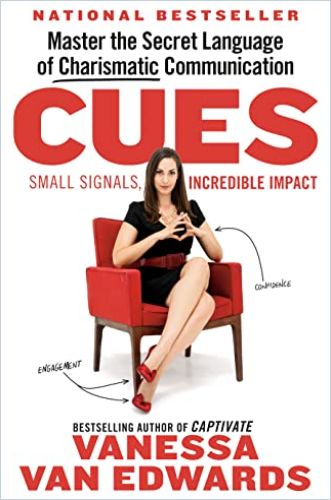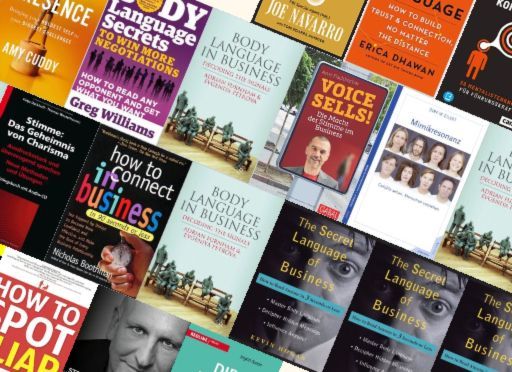High-impact communicators aren’t born, they’re made. Behavioral investigator Vanessa Van Edwards spills the secrets to high-impact communicating in this insight-rich, actionable guide to cues – the subtle but potent keys to clear, purposeful communication.

Cue Up Stronger Communication
Some speakers soar, others flop. One job applicant makes an impact, another hardly makes a ripple. The difference between success and failure can seem mysterious and hard to pin down. But according to behavioral researcher Vanessa Van Edwards, the secret to memorable, powerful communication lies in cues: the broad range of nonverbal, vocal and visual signals that all people use when they communicate, but that only a fraction employs consciously and intentionally.
Van Edwards illustrates her points vividly with examples from real life – such as Jamie Siminoff, the inventor of Ring, a Wi-Fi–enabled video doorbell. While competing on the reality TV show Shark Tank, Siminoff discovered how ignorance of one’s own cues can trigger a communication disaster. Although sales of his now-popular doorbell showed early promise, Siminoff sabotaged his TV presentation with a series of bad cues, Van Edwards says. His vocal inflections and body language conveyed nerves and insecurity, and the investors unanimously rejected his pitch.
The right cues can take a lackluster conversation, meeting or interaction and make it memorable.
Van Edwards’s thesis: Cues are a powerful but often-overlooked component of human interaction. Every cue that you unconsciously use, she says – including your posture, the way you enter a room, your gestures, your vocal pitch and more – can either underscore or undermine your conscious intentions. Thus, to communicate with your desired impact, you need to understand how cues work, and how to make them work for you.
Charisma on Cue
Van Edwards posits that two fundamental traits – warmth and competence – alone account for the vast majority of people’s impressions of others. Warmth and competence combine to create charisma, she says. And it’s your cues that signal to others whether you possess these traits. Hence, anytime you aim to impress others – at work, on a date or with friends – you should seek to control the warmth and competence you convey.
You need both, Van Edwards points out: Projecting warmth without competence could mark you as a pushover, while competence without warmth can lead people to view you as cold or untrustworthy. People who lack both warmth and competence will land in a “danger zone” where they’ll find themselves undervalued, pitied and ignored.
Van Edwards gives specific tips for incorporating nonverbal cues of warmth and competence in your communications. People will perceive you as warm, she says, if you lean forward, make eye contact and keep your body open toward those you’re communicating with. Avoid crossing your arms or placing barriers, such as a desk or laptop, between you and your listeners. Tilting your head, nodding, raising your eyebrows, smiling and touching the other person – if done authentically and appropriately – can also lead others to perceive you as warm.
You can have the best content in the world, but if it’s not shared with the right charisma cues, it doesn’t land.
To boost perceptions of your competence, Van Edwards recommends the use of hand gestures – such as steepled hands to suggest relaxation and confidence, or showing your palms to gain attention and signal sincerity – as well as the use of subtler nonverbal cues, such as squinting slightly to convey intense attention. The power posture – standing with your feet slightly wider than shoulder-width apart, letting your arms hang loosely by your side, lengthening your neck and looking straight ahead – is another nonverbal cue that conveys competence.
Van Edwards sees TV personality Oprah Winfrey as an exemplar of charisma. Winfrey built her career on a combination of laughs and hugs, conveying warmth, balanced with an attentive listening style, projecting competence. As a result, Van Edwards says, audiences accept Winfrey as both trustworthy and credible.
Vocal Power
When it comes to charisma, how you speak is just as important as what you say, Van Edwards suggests. Your voice reveals a lot about you, she says, and it can either reinforce or undermine your words. Cultivating a charismatic voice – that is, a tone, volume, tempo, syntax and cadence that convey warmth and competence – can build your influence by leading people to see you as trustworthy, confident and professional.
Volume is a critical aspect of power – it takes breath and expansiveness to be loud.
Again, Van Edwards offers specific tips for developing that charismatic voice, such as pitching your voice low, avoiding the use of vocal fillers such as “um,” “like” and “you know,” and breathing deeply, speaking as you exhale, to bring energy to your voice and avoid the raspy sounds of “vocal fry,” which can signal nervousness.
Van Edwards notes that at times, the challenge is to add not power but likability to your voice. In another helpful example, she describes how the sometimes shrill voice of former British prime minister Margaret Thatcher held her back early on in her political career. When the Iron Lady learned to speak with control, at a lower pitch, her voice acquired a warmth that increased her likability, charisma and confidence.
Van Edwards offers a list of vocal cues you can use to boost your likability, such as saying hello in a happy, controlled manner, setting a warm tone with phrases such as “Thrilled to be here” or “Lovely to see everyone,” and varying your vocal range.
Cues for Power
Van Edwards goes beyond charisma to discuss power itself – that is, what personal power looks and sounds like in terms of cues. Here, the author draws on analyses of political leaders John F. Kennedy and Eva Peron to illustrate cues such as posture and gesturing. She discusses vocal confidence in depth, covering topics such as pitch, volume control, the use of pauses and how to solve vocal fry.
Throughout the book, Van Edwards offers detailed instructions for incorporating positive cues into your daily interactions. Backed up by extensive research, conveyed in a breezy, reader-friendly style and reinforced with practical exercises, Van Edwards’s how-to provides a useful resource for leaders, managers and anyone looking to communicate with greater clarity, purpose and impact.






